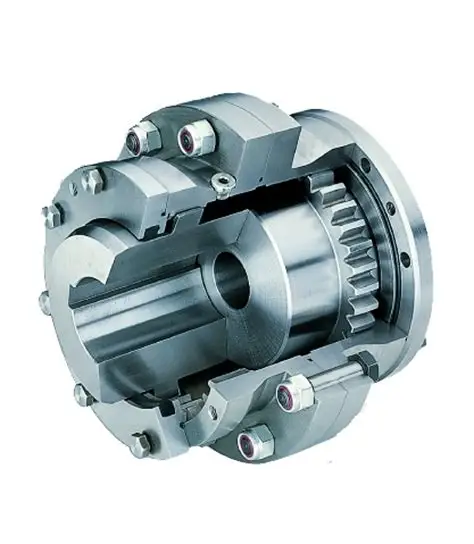GEAR COUPLING
Equipment couplings are torsionally rigid and are equipped to two patterns â fully versatile and flexible/rigid. A entirely flexible coupling comprises two hubs with an exterior equipment and two outer sleeves with an internal equipment. It really is a common coupling for  all sorts of purposes and accommodates all attainable misalignments (angular, offset and blended) as effectively as large axial moments. Devices, bearings, seals, and shafts are therefore not subjected to the extra forces, often of substantial magnitude, which crop up from unavoidable misalignment usually linked with rigid shaft couplings.
all sorts of purposes and accommodates all attainable misalignments (angular, offset and blended) as effectively as large axial moments. Devices, bearings, seals, and shafts are therefore not subjected to the extra forces, often of substantial magnitude, which crop up from unavoidable misalignment usually linked with rigid shaft couplings.
A adaptable/rigid coupling includes one particular adaptable geared fifty percent and one rigid fifty percent. It does not accommodate parallel displacement of shafts but does accommodate angular misalignment. This kind of couplings are mainly employed for “floating shaft” purposes.
Dimensions 010 â 070 all have crowned teeth with a 20° stress speak to (fig one). This enables to accommodate up to 1,5° static angular misalignment per gear mesh. Nonetheless, reducing the operational misalignment will optimize the life of the coupling as well as the life of other machinery components these kinds of as bearings and so forth.
Gear COUPLING
gear coupling is a torsionally rigid grease loaded coupling consisting of two hubs with exterior multicrown – and two flanged sleeves with straight internal tooth. The flanged sleeves are bolted together with high energy corrosion safeguarded equipped bolts and nuts. The sleeve is at the opposite side of the flange executed with an endcap (internal for small and screwed for big dimensions couplings) in which the o-ring is positioned for sealing needs. The gear coupling has been made to transmit the torque among these two flanges by way of friction avoiding fretting corrosion between these faces.
The teeth of hub and sleeve are continually in make contact with with each and every other and have been designed with the necessary backlash to accommodate angular-, parallel- and axial misalignment within their misalignment capacity. The angular and parallel misalignment capacity is identified by the equipment tooth layout and is for the regular equipment max. one.5° levels (2 x .75°) in total. The axial misalignment potential is restricted by the equipment tooth length in the sleeve and can be varied (optionally).
For more details on CHINA GEAR COUPLING, see our internet site.